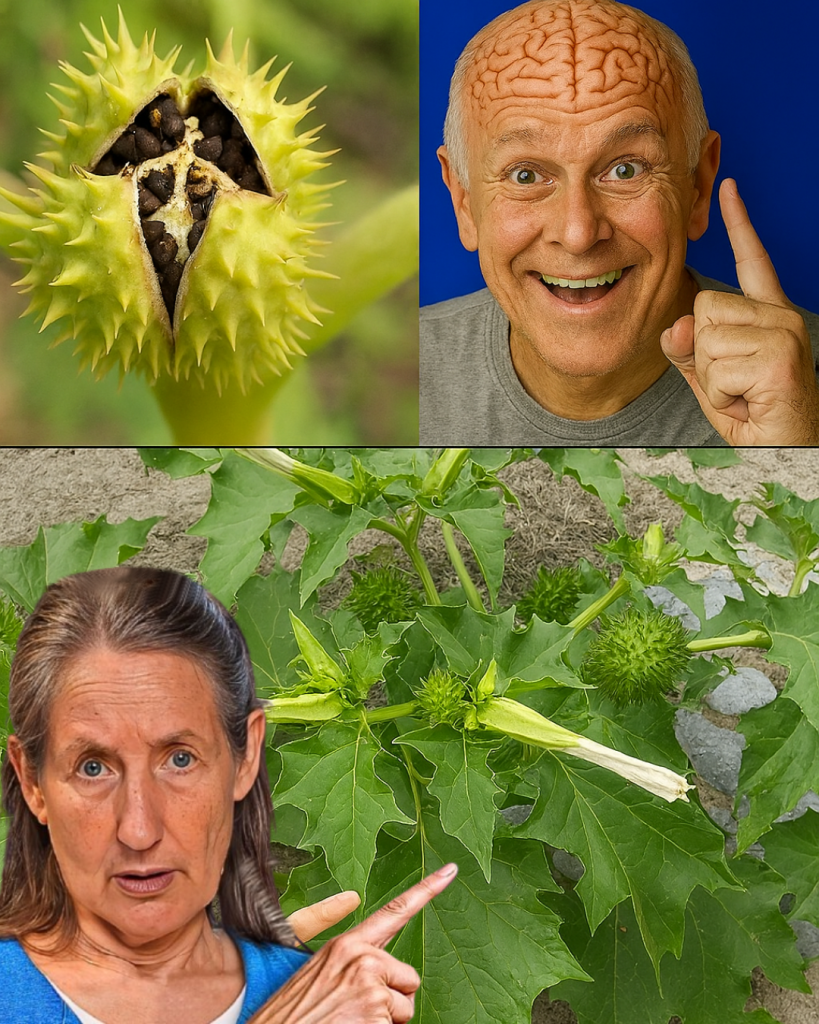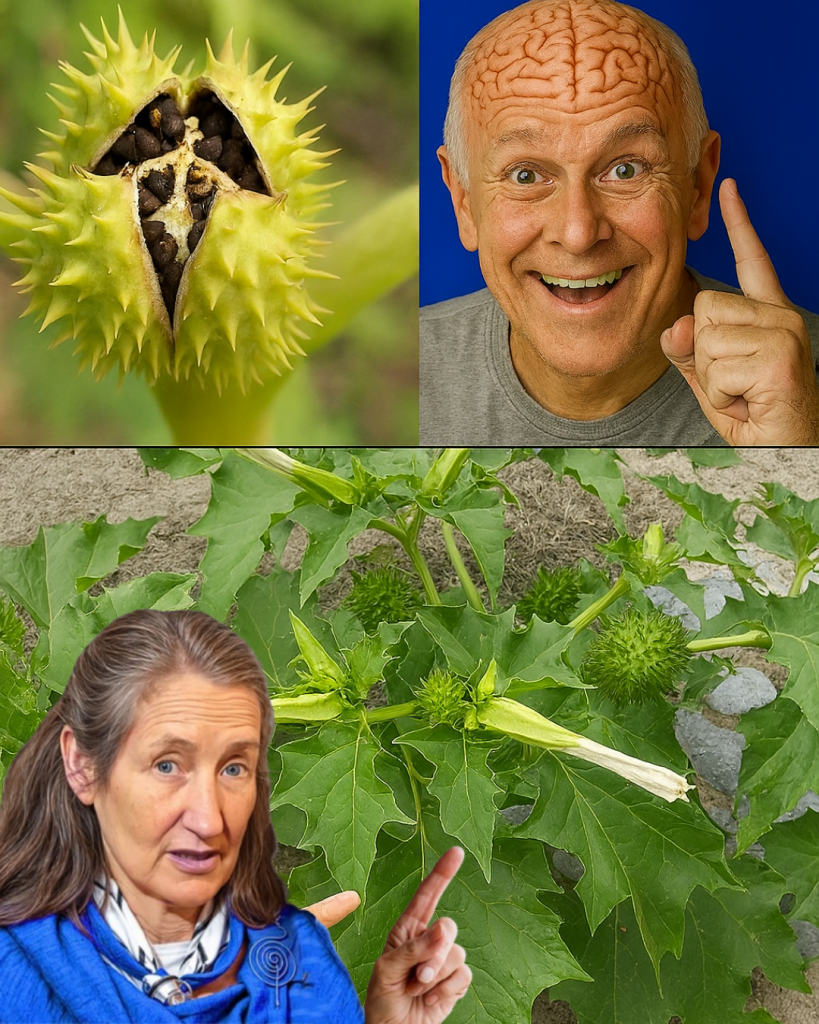🌺 Have you ever stumbled upon a flower so captivating, so mysterious, that it seems to whisper secrets of ancient lore? Meet Datura, a plant that lures you in with its ethereal beauty and holds you captive with its enigmatic history. Known as the “Devil’s Trumpet,” this alluring flora dances between enchantment and danger, promising a tale that will keep you spellbound. Step into its world, where every petal tells a story, and every scent carries a warning.
Datura is no ordinary garden bloom. Its large, trumpet-shaped flowers unfurl under the moon’s gentle glow, casting a spell over anyone who dares to linger. But beneath its delicate facade lies a potent history of mysticism, medicine, and myth. This article unveils the secrets of Datura, exploring its striking appearance, cultural significance, and the delicate balance it strikes between beauty and peril. Designed to captivate your curiosity, this journey into Datura’s realm will leave you enchanted and eager to learn more.

A Flower That Commands Attention
🌸 Datura’s allure begins with its breathtaking appearance. Picture a plant standing tall, often reaching up to five feet, with sturdy stems that proudly bear its iconic flowers. These blooms, shaped like elegant trumpets, can span up to eight inches in length, their petals unfurling in shades of creamy white, soft lavender, or pale yellow. Each flower seems to glow in the twilight, a beacon for nocturnal pollinators like moths, drawn to its intoxicating fragrance.
The leaves of Datura are no less striking. Broad, dark green, and slightly fuzzy, they create a lush backdrop that contrasts beautifully with the radiant flowers. Some species, like Datura stramonium, feature jagged edges on their leaves, adding a touch of wildness to their elegant form. The plant’s seed pods, often called “thorn apples,” are spiky, orb-like structures that add an element of intrigue, hinting at the danger lurking within.
What makes Datura truly mesmerizing is its ability to bloom at dusk, as if performing a nightly ritual for the stars. This nocturnal display isn’t just a visual treat—it’s a survival strategy, ensuring pollination under the cover of darkness. The sight of Datura in full bloom under a moonlit sky is nothing short of magical, inviting you to pause and marvel at nature’s artistry.
A Tapestry of History and Myth
🕯️ Datura’s story stretches across centuries and continents, woven into the fabric of human culture. From ancient rituals to modern gardens, this plant has left an indelible mark. In many cultures, Datura was revered as a sacred plant, a bridge to the divine. Shamans in South America used Datura in spiritual ceremonies, believing its potent properties could unlock visions and connect them to otherworldly realms. Its hallucinogenic effects were both revered and feared, a double-edged sword wielded by those who understood its power.
In Hindu mythology, Datura is associated with Lord Shiva, often depicted with the plant’s flowers adorning his image. It’s said to symbolize transformation and transcendence, a fitting tribute to a plant that blurs the line between reality and dream. In medieval Europe, Datura earned darker nicknames like “Witch’s Weed,” tied to folklore about witches using it in potions and spells. This duality—sacred yet sinister—makes Datura a plant that sparks endless fascination.
Even today, Datura’s mystique endures. It appears in literature, art, and even modern spirituality, where it’s celebrated for its otherworldly aura. But its history isn’t just about myth; it’s also about survival. Indigenous peoples used Datura’s leaves and seeds in small, carefully measured doses to treat ailments like asthma, pain, and fever, showcasing its medicinal potential when handled with respect.
The Science Behind the Spell
🔬 Beneath Datura’s enchanting exterior lies a complex chemical profile that explains its potent effects. The plant contains alkaloids like scopolamine, atropine, and hyoscyamine, compounds that can induce everything from sedation to vivid hallucinations. These chemicals are found in every part of the plant—leaves, flowers, seeds, and roots—making Datura a powerful presence in both traditional medicine and toxicology.
In small doses, these alkaloids have been used to treat conditions like motion sickness and muscle spasms. Scopolamine, for instance, is still used in modern medicine as a remedy for nausea. But Datura’s potency demands caution. In higher doses, its alkaloids can cause delirium, rapid heart rate, and even life-threatening complications. This delicate balance between healing and harm is what makes Datura so intriguing—a plant that can soothe or unsettle, depending on how it’s used.
Scientists continue to study Datura, exploring its potential in pharmaceuticals while warning of its risks. Its ability to alter consciousness has drawn interest from neurologists and ethnobotanists alike, who seek to understand how it interacts with the human brain. Yet, even with modern science, Datura retains an air of mystery, as if it holds secrets that defy explanation.
Datura in the Garden: Beauty with a Warning
🌿 For gardeners, Datura is a showstopper, a plant that transforms any landscape into a scene of ethereal beauty. Its large flowers and lush foliage make it a favorite for ornamental gardens, particularly in warm climates where it thrives. Datura prefers well-drained soil and full sun, blooming prolifically in summer and early fall. Varieties like Datura metel, with its double-petaled flowers, or Datura inoxia, with its ghostly white blooms, add a touch of drama to any garden bed.
But growing Datura comes with responsibility. Its toxic nature means it must be planted away from curious pets or children who might be tempted by its striking appearance. Gardeners are advised to wear gloves when handling it, as even prolonged contact can cause skin irritation in some cases. Yet, for those willing to respect its boundaries, Datura rewards with unparalleled beauty, its flowers glowing like lanterns in the evening light.
Caring for Datura is surprisingly straightforward. Regular watering, occasional pruning, and protection from frost keep it thriving. Its resilience makes it a low-maintenance choice for gardeners who want a plant that’s as hardy as it is beautiful. Whether grown in pots or sprawling across a garden, Datura’s presence is impossible to ignore.
A Plant of Contradictions
⚖️ Datura is a study in contrasts—a plant that’s both breathtaking and dangerous, sacred and feared. This duality is what makes it so compelling. It’s a reminder that beauty often comes with complexity, that nature’s gifts can be both generous and guarded. To encounter Datura is to stand at the crossroads of wonder and caution, where every glance at its flowers invites you to delve deeper into its story.
For those drawn to the unusual, Datura is a muse. Artists have painted its blooms, writers have woven it into tales, and gardeners have cultivated it as a symbol of nature’s untamed spirit. Its ability to captivate spans cultures and eras, from ancient shamans to modern botanists, each finding something unique in its presence. Datura doesn’t just grow; it commands attention, demanding that you stop and consider its place in the world.

Why Datura Stays with You
🌙 What is it about Datura that lingers in the mind? Perhaps it’s the way its flowers seem to glow with an inner light, or the stories of its use in rituals that echo through time. Maybe it’s the thrill of danger, the knowledge that something so beautiful can hold such power. Whatever the reason, Datura has a way of staying with you, its image etched in your memory long after you’ve left its side.
This plant challenges you to look closer, to question what you know about the natural world. It’s a reminder that beauty is never simple, that every flower has a story to tell. As you read this, you might find yourself imagining a Datura plant in your own garden, its trumpet-shaped flowers swaying in the evening breeze. Or perhaps you’re picturing the shamans of old, using its powers to glimpse the unseen. Either way, Datura has woven its spell, drawing you into its world of mystery and allure.
A Call to Explore
🔍 Datura is more than a plant—it’s an invitation to explore the unknown. Its beauty beckons, its history fascinates, and its dangers remind us to tread carefully. Whether you’re a gardener, a history buff, or simply someone who loves a good story, Datura offers something to captivate you. Its flowers may bloom for a single night, but their impact lasts far longer, sparking curiosity and wonder in all who encounter them.
Take a moment to imagine standing before a Datura plant, its petals glowing under the moonlight. Feel the pull of its mystery, the urge to learn more about its past and its power. This is the magic of Datura—a plant that doesn’t just grow in gardens but takes root in your imagination, urging you to uncover its secrets. So, the next time you see a trumpet-shaped flower glowing in the dusk, pause and listen. Datura has a story to tell, and it’s one you won’t soon forget.









